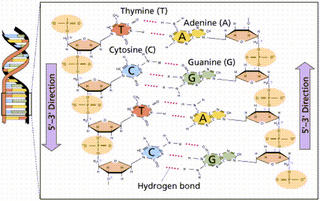replication and transcription...let me translate

so did you know that in our bodies our DNA is constantly replicating itself as well as serving as a template for RNA. Most of you could probably answer yes to that question. But did you know that DNA primase starts the process of replication at an initiator site, where the two strands of DNA bubble and fork (not ZIP) open, where-in DNA helicase comes in to break up the two weak H bonds between adenine and thymine, and the three between cytosine and guanine? And did you know that after that the DNA polymerase enzyme starts its work pairing up the free floating nucleotides in the nucleoplasm A with T, C with G to create a whole new strand where DNA ligase binds the phosphate group of the previous nucleotide with the sugar (deoxyribose 5-carbon) of the following nucleotide to create the backbone of the new strand of DNA...these two strands make up one chromosome, two chromosomes bind together changing their names to chromatids when bound by a centromere? Replication can only occur from the 5' end to the 3' end. the one side of DNA is the leading strand and can replicate continuously, but the other strand is the lagging strand which means that it replicates in segments. These segments are called Okasaki fragments. did you know that?
and did you know that transcription starts in much the same way with primase and then helicase? Helicase breaks the bonds between the two strands of DNA creating a template strand and a nontemplate strant. The template strand is the template for RNA production. polymerase starts working on transribing the DNA strand into RNA, A with U, C with G. The RNA will continue to be produced from the 5' end to the 3' end until it reaches the terminator site where it will break away from the DNA. The DNA that had been separted intitially will come back together at this time. At this time the RNA is called pre-mRNA, it is not yet functional. To become functional a guanine cap is added to the 5' end and a poly-A tail is added to the 3' end. This makes the mRNA stabble. Next, the introns, groups of coded pre-mRNA must be removed leaving only exons. The exons bind together making the mRNA functional. The functional RNA binds to a small part of a ribosome which attracts another piece of ribosome. They bind together making the ribosome functional to begin the process of creating chains of amino acids which will eventually become proteins. The ribosomes process the mRNA, the mRNA codes for which amino acids will bind to it. In comes tRNA. tRNA with its twisted shape has an anti-codon a group of three nucleotides which binds to mRNA codons, creating chains of amino acids called polypeptide chains. this is because the bonds between each amino acid is called a peptide bond. This process starts at the intiatior codon on the mRNA which is ALWAYS 'AUG' and is the MET amino acid. There are twenty amino acids all together. The process stops at a "stop codon." So, did you know that?
I have a quiz today. --SN


1 Comments:
How'd you do on your quiz? What a great pedagogical use of technology. I must mention this in my class on Technology in Education.
Post a Comment
<< Home